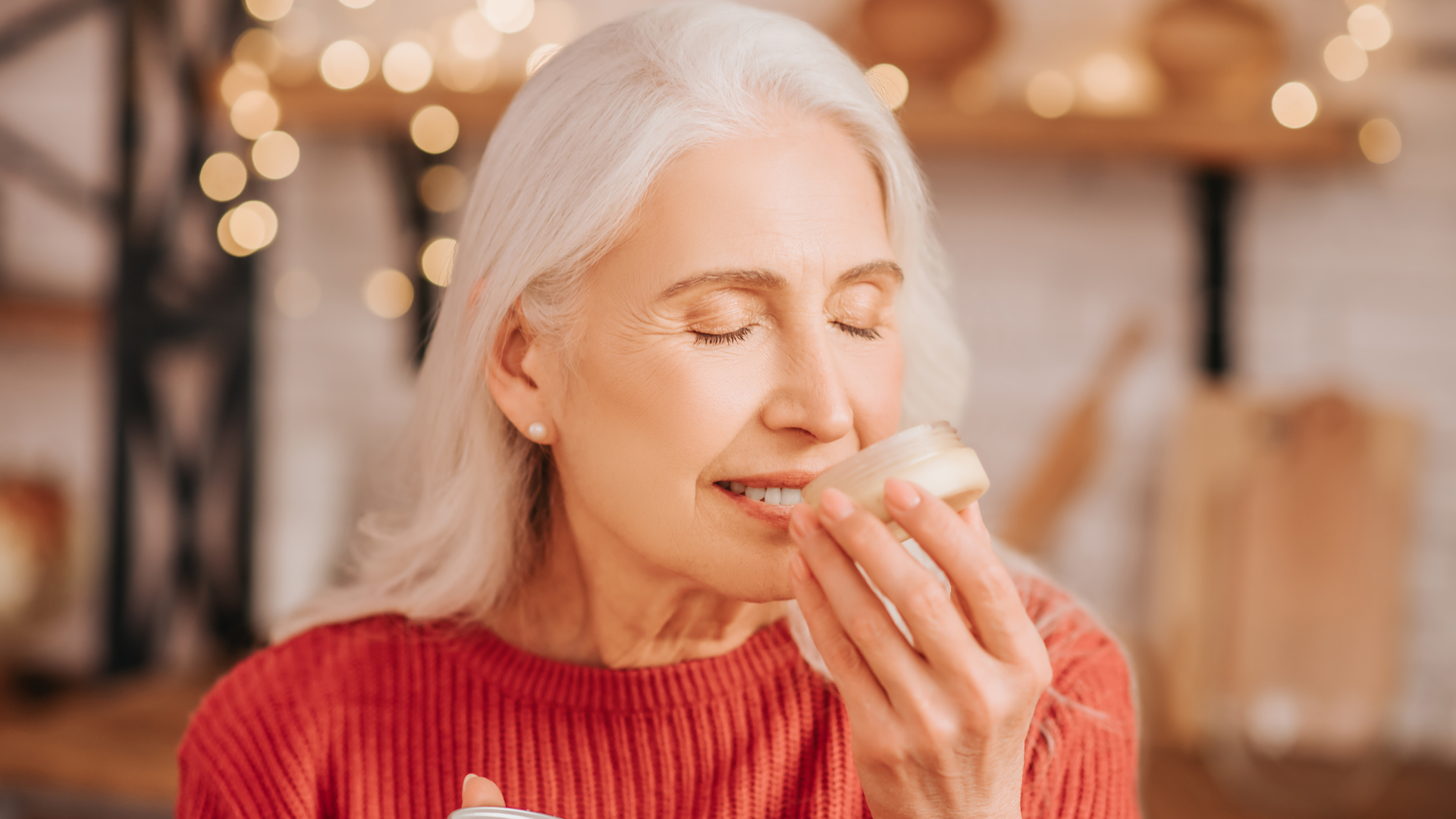Can neuro-cosmetics improve well-being and emotions?

Have you ever thought about the impact of neurosciences in cosmetics, and how it can enable your product conception as a formulator ?
On this article, we are tackling the universe of applied neurosciences to cosmetics. This first article aims primordially to clarify the difference between mood and emotions and assess the mechanisms and triggers of the brain and hormones.
There is an important nuance to be made here, but first let us decode some consumer needs and behavioral shifts in the past years, which can help us, nowadays, to better understand the importance of acknowledging and relating to consumer emotions.
A global breakout and the increase of negative emotions.
With the breakout epidemic and the COVID-19 sanitary crisis, the level of stress has significantly increased. Already in 2019, three out for 4 people in the world were feeling somewhat stressed or anxious (1). In an even more surprising number, according to a study run in 2016, 20% of the whole French population had skin problems (2).
This same study also shows that half of the people who had skin diseases also suffered from anxiety and depression. This helps us make a clearer connection between the skin and the way we feel. Underlying the link between skin and the way we feel, but also between the skin and the brain.
In another related trend, when choosing their cosmetic products, half of the European women prioritize items which reduce anxiety, stress or can help them relax (3). In the US, 6 women out of 10 believe that mental wellbeing has become a very high priority since the COVID-19 crisis (4).
So, looking into addressing this buying and perception shifts, combined with a pandemic context - which further pushes the consumer’s demand for experiences and products that can potentially help them counterweight the overall negative feelings and emotions - there is an aching opportunity for formulators, and the industry in general, to capitalize on neurosciences, and make it a part of the product conception process in cosmetics by first understanding how the brain and emotions work.
But first, let's look into what neuroscience really is.
What is neuroscience, and how has it evolved through time?
This is a science which aims at studying the structure of the nervous system (more specifically organs such as the brain, the stomach, the intestines and the skin) and the way they function (through signals and the receptors).
Neurosciences, much like psychology,has,throughout history, investigated further understanding the “negative” states of mind, such as depression and/or anxiety. For instance, they have both played a major role during WWI and WWII, when doctors had to deal and treat the extreme psychological traumas endured by soldiers returning home from the hardship of battlefields.
However, a more recent shift on the approach to the topic, has started broadening the scope and focusing rather on understanding the “positive” moods, emotions and overall well-being of individuals than on the traumatic or negative aspects of different pathologies.
This has also enabled a flip from a “medical” point of view of neurosciences to a more “recreational” and practical application of it, through food supplements, perfumes and, of course, Cosmetics.
Neuroscience and Cosmetics: a perfect match.

It is through the understanding of the main differences between emotions and mood that we can then grasp how to apply such an abstract notion to your tangible products in Cosmetics. Emotions are usually brief and linked to specific events, and amongst them we find a wide range and degrees, such as anger, disgust, fear, happiness and sadness. Usually, these emotions are combined with changes in our bodies, expressions and psyche.
Moods, on the other hand, are usually long lasting, deeper rooted and broader, be it positively or negatively. Moods are usually not completely linked to specific body expressions, so, all in all, it is easier to measure emotions than moods.
If we follow that logic, when you apply a cosmetic product on your skin the first thing that you expect is to get the immediate biological benefit claimed by the product, either it is moisturizing, calming or anti-aging.
Faster than you can dry it off, the brain is triggered to interpreter and handle the sensations of applying the product topically. Indeed, the immediate next step is the self-perception of the expected benefits.
This will create “an emotion” and this emotion will have a big impact on the overall well-being of the individual. More importantly, this triggered emotion, be it negative or positive, can have a further impact on the skin and on biological benefits.
The Chemical triggers of applying a cosmetic product.
Chemically speaking, for instance, a positive emotion will raise the level of β-endorphins which are hormones known to have a positive effect on the skin. Indeed, β-endorphins accelerate wound healing. On the contrary, negative emotions may raise the level of some stress hormones, such as cortisol, which have a negative effect on the skin, like raising the level of key inflammatory mediators.
Mechanically speaking, sensorial information generated by the application of a cosmetic product will first go to the thalamus, the area of the brain which collects all the sensory signals and sends them to the various unimodal cortex areas, like the visual or the auditive cortex.
From there, it continues its journey, heading to the polymodal sensory cortex, which then makes a synthesis of all this flow of information. This is the process by which the brain defines and perceives whatever is at the origin of the initial sensory signal, be it the application of cosmetic product, a perfume or a drink. Overall, this is a very slow process.
The Emotional triggers of applying a cosmetic product.
In parallel, the thalamus will send the information to the amygdala, which is located under the cortex, deep in the center of the brain. This is the area that generates and controls emotion. It is totally disconnected from consciousness. This is where the emotional treatment of the information will be performed.
What is important is that the amygdala treatment is very fast compared to the way the sensory cortex functions. As a result, the amygdala will influence how the sensory cortex will treat the sensory information which, again, can be a very is a slow process.
In a recent study (5), a joyful picture was shown to a random group of people, then a drink was subsequently offered to them. At the same time, in another room, another group was exposed to a sad picture, and they got the exact same drink to taste afterwards.
Data shows that the group of people who got the joyful picture was more inclined to positively evaluate the drink than the group who stared at the more depressing picture. This perfectly illustrates how emotions can influence the way we perceive things.
Formulating well-being: Why should formulators play around and transform emotions through ingredients?
Perfume is an excellent illustration of the impact of ingredients on emotions. Freshness is a benefit which is roughly associated with the presence of specific volatile perfume notes. A piece of fabric washed with a detergent containing a fresh perfume will be perceived as much cleaner than a piece of fabric washed with the same detergent formulated with a less fresh perfume.
Basically, what these examples illustrate, is that by choosing the right ingredients to your formulation, you start by triggering the psychological event of the user, which is : “odor receptors in the nose capture volatile perfume notes”, and end up with emotional benefits such as “Maintain daily skin comfort” “, “Resets your mind”,” empowers you awakens your senses”, etc.
Formulators, and their companies, can clearly benefit a lot from the knowledge of neurosciences and its smart and thoughtful application on Cosmetic products. Taking emotions into account when creating a product can add tremendous value to it, grasping consumers emotions firsthand, creating an emotional bound -one of the hardest bounds to break- with your product.
This kind of value can also be perceived on multiple levels, such as product positioning, customer satisfaction, branding, distinctive value proposition in the market, etc.
So far, we have just scratched the surface of this vast and trendy topic, by digging into how emotions are generated and through which mechanisms, influencing our overall perception of things. In our next article, we will go deeper into the skin and look at how we can concretely identify the messengers and the receptors associated with the sensory signals.
We will also look at the different ways to measure and identify mood and emotions. Our goal is to enable you, as a formulator, to strategically integrate neurosciences when you determine mechanisms of action, make claims or when you do product positioning, creating a unique experience to your customers and a product with a top-of-mind market presence.
Stay Tuned!
References:
1) Source: Global Data, Q3 2019
2) Votre peau a des choses à vous dire, Pr Laurent Misery, Larousse, 2019
3) Source: Lightspeed/Mintel, base: France, Germany, Italy, Spain: 2,000 internet users aged 16+ in each country (2019)
4) Source: Lightspeed/Mintel: base: US: 2,000 internet users aged 18+, Jul 28-Aug 4, internet users aged 18-49 who have bought clean beauty and personal care products in the last six months
5) Skin, brain and emotion: the challenges of the holistic approach, Dr Arnaud Aubert, conference given at the International Cosmetic Symposium (digital edition) organized by the French Cosmetic Society, Paris, December 3 and 4, 2020



